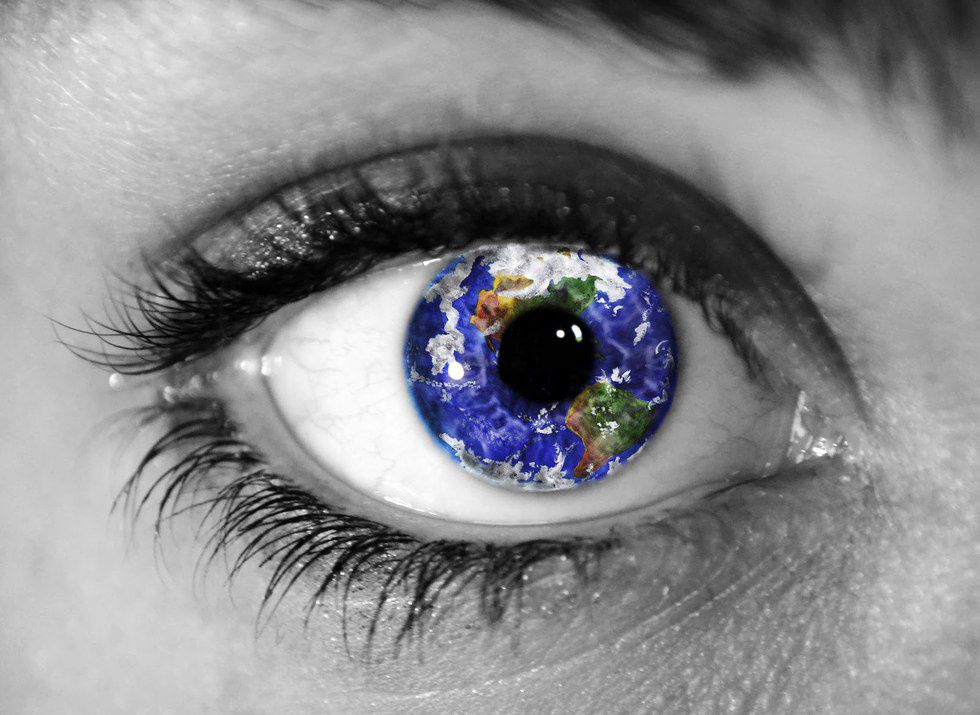What is it about blue eyes that we love? Is it their rarity? Their range of hues? Are they symbolic of something from our past? What makes us go for those baby blues? One thing someone is bound to mention within a short time of meeting me is something about my eye color. Being the inquisitive person I am, I decided to start researching why we tend to like blue eyes so much. As I read through more and more articles, I began to learn more about the history and biology about blue eyes. I don't know if I will be able to answer why we like them so much, but I definitely think these facts make them much more interesting.
1. Only 8 percent of the world's population has blue eyes.
Some countries have a majority of blue eyes, but that is misleading. The most dominant eye color in the world is brown at 55 percent.
2. There is no blue pigment in blue irises.
The blue coloring is actually due to the iris having a colorless stroma and no excess collagen deposits. This results is the Tyndall effect, making your eyes look blue the same way the sky looks blue even though it really is not, due to Rayleigh scattering.
3. The shade of blue is dependent on mineral deposits and light.
The Tyndall effect relies on light scattering and proteins and minerals found in your eye can effect how much of it is scattered.
4. Blue-eyed people are more sensitive to light.
Blue-eyed people lack melanin in their irises, which is used to shield the eye from intensive light, like the sun or fluorescent lighting.� Our eyes might be wide open for the family picture, but once it is taken, we go straight back to squinting.
5. Blue eyes allow for better night vision.
Similarly to being sensitive to daylight, the lack of melanin allows more light to enter our eyes at night, giving us a light advantage at stumbling our way to bed.
6. Blue eyes were the result of a mutation.
Originally, humans were all brown-eyed. Then someone in the Black Sea region from 6,000 to10,000 years ago had a genetic accident at conception that resulted in his eyes being blue. The mutation carried on as several other also had mutations after the Ice Age.
7. The OCA2 gene is responsible for blue eyes.
Also known as oculocutaneous albinism II, this gene is responsible for producing melanosomal transmembrane protein, or the P protein. It is located on chromosome 15. When it is repressed, the person gets blue or green eyes.
8. We don't know what exactly the P protein does.
We do know it is needed for normal pigmentation, but we are not sure how. The best guess is that it is responsible for producing melanin. Strange, how something as simple as eye color isn't completely understood yet.
9. Blue eyes are not controlled by a single recessive gene.
It is a common mistake that people think that blue eyes are recessive. They are really affected by multiple genes that can determine the shade or even make it another color, like green.
10. They were used as a fidelity test.
Many people used to believe that blue-eyed people could only have blue-eyed children, so a baby's eyes were sometimes used as a test to see if a spouse had cheated. It took a little while for science to clear this up.
11. We are more likely to have red eyes in photos.
This is most prevalent when flash is used. More light enters our eyes and our retinas cannot constrict fast enough to prevent it from bouncing back, resulting in the red eye. The red eye function on cameras let out several flashes to help our retinas constrict.
12. Blue-eyed people are better at long-term and strategic thinking.
OK, so the research is still out on this, but there is some evidence linking our big blue eyes to these cognitive bonuses. Obviously, it is still disputed in the biology and psychology communities.
So, did you learn something new? Has your curiosity been piqued? Maybe next time you look at someone's blue eyes you will think a little more than just, "Aren't they pretty." If you have blue eyes, you might find yourself taking a closer look in the mirror at your optical sapphires.


























